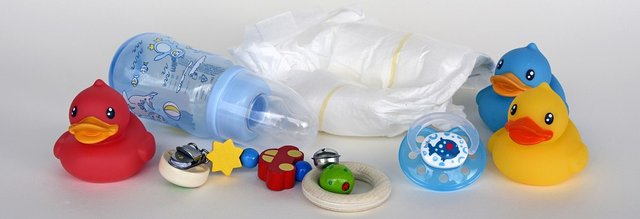Are Plastic Bottles Dangerous for Kids?
In an effort to get in those touted "eight glasses per day," we schlep around water bottles everywhere we go. But is the drinking water in those plastic bottles safe? Researchers and consumers alike have become increasingly concerned about what effects the chemicals in plastics have on our bodies. More and more, the question has become: Is that plastic cup contaminating your drink? Is the water in a grab-and-go individual water bottle actually dangerous for you and your kids? Are baby bottles toxic?
The most publicly controversial of all plastics is bisphenol A, also known as BPA. BPA is a chemical found in hard, clear polycarbonate plastics. It has been used by the plastics industry since the 1950s to make products like sports equipment, medical devices, CDs, and home electronics; it coats the inside of some canned goods; and of course, it is used in the manufacturing of water and baby bottles.
As these plasticized products have become a ubiquitous part of our society, BPA exposure has multiplied. In fact, recent studies in the US demonstrate BPA in the blood or urine of 95% of all people tested. BPA falls into the category of "endocrine disruptors" (EDs), chemicals that appear to interfere with hormones and other signaling systems in the body. Specifically, BPA is accused of mimicking the effects of estrogen.
There is certainly data damning BPA. Studies have shown that exposure to high levels of BPA does cause increased risk of uterine fibroids, endometriosis, and breast cancer; it lowers sperm count; and it increases the risk of prostate cancer. The effects of BPA in the body are not limited to estrogen-imitation. There is emerging data that it may be related to obesity as well. In studies done on mice, BPA was found to cause insulin esistance. Insulin is the chemical in the body responsible for helping glucose (sugar) get into the body's cells so that it is can be used as energy. When the cells become resistant to insulin, they cannot take in glucose. The glucose sits around in the bloodstream, building up to excessive levels. High blood sugar = diabetes.
My own bottom line is a little more black and white. When you have the option, opt for an alternative to plastic. If you are at home, fill a cup with tap water rather than grabbing a plastic bottle of water. It is better for the environment and likely better for you. But all things in moderation. I have not thrown out every single plastic storage container in my home. Instead, I simply keep hot food and drinks away from plastic. I also hand wash and rack-dry plastic cups and containers rather than dishwashing them. I have begun to take the lids off of to-go coffee cups (why sip through a plastic lid unnecessarily?) and I never cover microwave food with plastic wrap. But when I am on the go, I use a plastic water bottle, as do my kids.

Thanks for using eSteem!
Your post has been voted as a part of eSteem encouragement program. Keep up the good work! Install Android, iOS Mobile app or Windows, Mac, Linux Surfer app, if you haven't already!
Learn more: https://esteem.app
Join our discord: https://discord.gg/8eHupPq